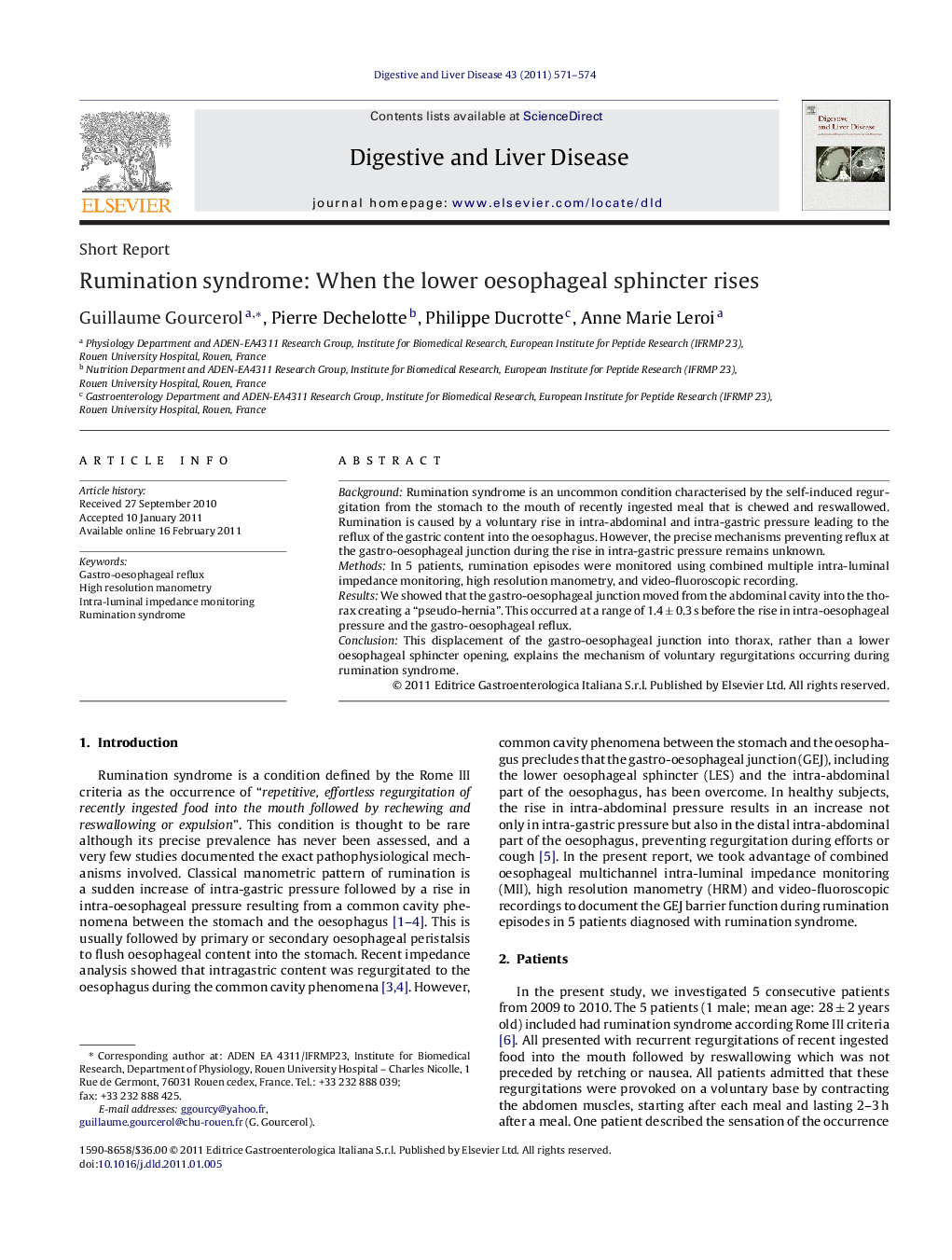| Article ID | Journal | Published Year | Pages | File Type |
|---|---|---|---|---|
| 3262998 | Digestive and Liver Disease | 2011 | 4 Pages |
BackgroundRumination syndrome is an uncommon condition characterised by the self-induced regurgitation from the stomach to the mouth of recently ingested meal that is chewed and reswallowed. Rumination is caused by a voluntary rise in intra-abdominal and intra-gastric pressure leading to the reflux of the gastric content into the oesophagus. However, the precise mechanisms preventing reflux at the gastro-oesophageal junction during the rise in intra-gastric pressure remains unknown.MethodsIn 5 patients, rumination episodes were monitored using combined multiple intra-luminal impedance monitoring, high resolution manometry, and video-fluoroscopic recording.ResultsWe showed that the gastro-oesophageal junction moved from the abdominal cavity into the thorax creating a “pseudo-hernia”. This occurred at a range of 1.4 ± 0.3 s before the rise in intra-oesophageal pressure and the gastro-oesophageal reflux.ConclusionThis displacement of the gastro-oesophageal junction into thorax, rather than a lower oesophageal sphincter opening, explains the mechanism of voluntary regurgitations occurring during rumination syndrome.
